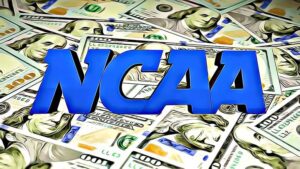 By Gerald L. Maatman, Jr. and Sean P. McConnell
By Gerald L. Maatman, Jr. and Sean P. McConnell
Duane Morris Takeaways: On November 3, 2023, Judge Claudia Wilken of the U.S. District Court for the District of Northern California granted a motion by Plaintiffs – a group of former, current and future student athletes – for certification of three proposed damages classes under Rule 23(b)(3) in the litigation entitled In Re College Athlete NIL Litigation, No. 4:20-CV-03919 (N.D. Cal. Nov. 3, 2023). Judge Wilken certified three classes seeking to recover compensation for the commercial use of their names, images, and likenesses (“NIL”). This class certification order follows a September 22, 2023 order in the same case certifying a proposed injunctive relief class under Rule 23(b)(2). While defendants did not dispute certification of the proposed injunctive relief class, they argued that the damages classes should not have been certified because the NIL market is inherently too distinct for the thousands of impacted student-athletes to claim the same kind of harm from lost compensation. In certifying the three proposed damages classes, the order sets the stage for a possible class-wide trial for hundreds of millions or even billions in back pay for student athletes.
Case Background
Plaintiffs are student athletes who either have competed or will compete on a Division I team since June 15, 2020. Defendants are the National Collegiate Athletic Association (“NCAA”) and the “Power Five” Conferences – the Pac-12 Conference, Big Ten Conference, Big 12 Conference, Southeastern Conference, and Athletic Coast Conference. Plaintiffs allege that Defendants set and enforced a set of rules to restrict the compensation that student-athletes can receive in exchange for the commercial use of student-athletes’ NIL and prohibit NCAA member conferences and schools form sharing with student athletes the revenue they receive from third parties for the commercial use of student-athletes’ NIL. Even though Defendants had suspended enforcement of some of these rules, they have not suspended enforcement of rules that prohibit NIL compensation contingent upon athletic participation or performances or enrollment at a particular school, including, most notably, compensation for lucrative broadcast deals that pay conferences hundreds of millions of dollars. Plaintiffs’ complaint includes claims for Sherman Act Section 1 violations for conspiracy to fix prices and group boycott or refusal to deal as well as a claim for unjust enrichment.
Plaintiffs moved for class certification of their claims under § 1 of the Sherman Act only.
The Court’s Certification Order
The decision at issue deals only with Plaintiffs’ motion for certification of three proposed damages classes under Rule 23(b)(3). The proposed classes are (i) current and former Division I men’s basketball players and FBS football players; (ii) current and former Division I women’s basketball players; and (iii) current and former Division 1 athletes that did not play Division I basketball or FBS football. Plaintiffs’ alleged damages fall into three different buckets, including: (1) broadcast TV NIL damages, which arise out of student-athletes having been deprived of compensation they would have received from conferences for use of their NIL in broadcasts of FBS football or Division I basketball games in the absence of the challenged restrictions; (2) video game damages, which arise out of student-athletes having been deprived of compensation they would have received from video game publishers for use of their NIL; and (3) third-party NIL damages suffered between 2016 and July 1, 2021 when the NCAA started to allow some NIL compensation for student athletes.
Defendants argued that the predominance requirement of Rule 23(b)(3) was not met because common proof cannot establish antitrust damages on a class-wide basis due to intra-class conflicts that exist among class members in each class as a result of Plaintiffs’ methodology for calculating damages. The Court disagreed. Relying largely on the opinions of Plaintiffs’ experts, the Court concluded that every class member suffered injury as a result of the NCAA’s rules, and that every class member will be entitled to receive a piece of the damages pie.
Implications For Organizations
The Court’s ruling is important to the ongoing debate over student athletes’ compensation. Thus far, NCAA-member schools cannot directly compensate their athletes for NIL. By certifying the damages classes proposed by Plaintiffs, the Court’s decision is likely to advance the ball on this issue.
